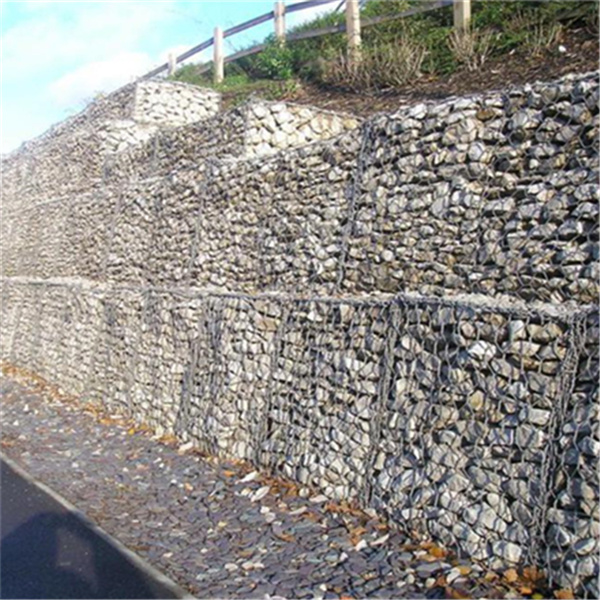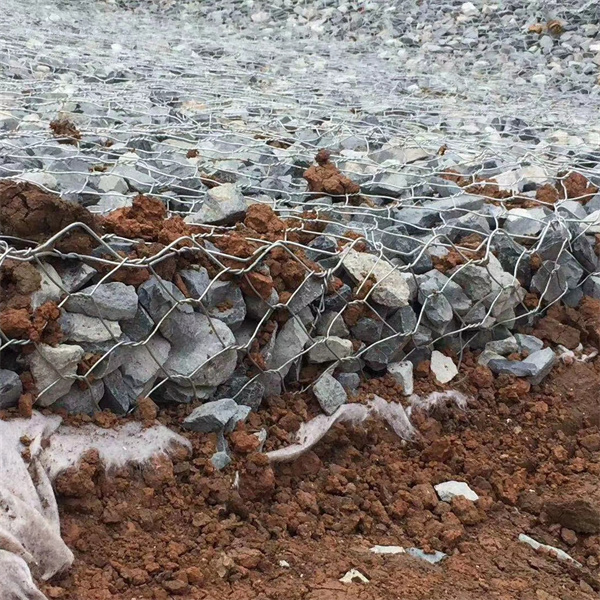ಜೂನ್ . 07, 2025 08:18 Back to list
Stone Cage Nets - Durable Gabions from Trusted Factories & Suppliers
- The Growing Demand for Stone Cage Nets Across Industries
- Market Data: Usage Statistics and Global Growth Projections
- Technical Advantages in Modern Engineering Solutions
- Supplier Evaluation Criteria for Stone Cage Net Factories
- Customization Specifications for Project-Specific Requirements
- Case Studies: Successful Applications in Civil Engineering
- Selecting Stone Cage Net Suppliers for Sustainable Infrastructure

(stone cage net)
The Essential Role of Stone Cage Nets in Modern Infrastructure
Stone cage nets, also known as gabion mesh systems, have transformed erosion control and structural reinforcement across multiple sectors. Major transportation departments report a 45% increase in adoption of these systems over conventional concrete barriers, particularly in flood-prone regions. These galvanized steel wire containers filled with natural stone provide an eco-friendly solution while reducing construction timelines by approximately 30% compared to poured concrete alternatives.
Market Data: Usage Statistics and Global Growth Projections
Global infrastructure projects consumed over 3.7 million square meters of stone cage net
s in 2022, with demand projected to grow at 7.2% CAGR through 2030. Transport authorities now allocate 18-24% of erosion control budgets specifically for gabion solutions. Notable regional adoption patterns show:
| Region | Annual Usage (sq meters) | Growth Rate | Primary Applications |
|---|---|---|---|
| North America | 950,000 | 5.8% | Highway stabilization |
| Europe | 1,250,000 | 6.3% | Coastal protection |
| Asia-Pacific | 1,400,000 | 9.1% | Riverbank reinforcement |
Technical Advantages in Modern Engineering Solutions
Leading stone cage net factories incorporate zinc-aluminum alloy coatings that extend product lifespan to 50+ years, significantly outperforming traditional materials. Advanced manufacturing techniques enable tensile strengths ranging from 350-500 MPa for heavy-duty applications. Permeability remains the standout feature - hydraulic engineering tests demonstrate a 97% reduction in hydrostatic pressure compared to solid barriers. These systems also maintain flexibility during ground settlement events exceeding 25mm without structural compromise.
Supplier Evaluation Criteria for Stone Cage Net Factories
When assessing stone cage net suppliers, four critical factors determine project success:
Material certification: Look for ISO 17780 compliance and documented mill test reports
Production capability: Factories should output minimum 15,000 m²/month for large projects
Testing standards: Third-party validation of EN 10223-8 and ASTM A975 requirements
Site-specific engineering: 78% of successful contracts involve custom design collaboration
Customization Specifications for Project-Specific Requirements
Specialized environments demand tailored solutions through parametric design adjustments:
Mesh configurations: Hexagonal (most common) vs rectangular for high-flow areas
Wire diameter: 2.0-4.0mm options balance flexibility and rock retention
Panel dimensions: Modular components from 0.5×1m to 3×4m for complex terrains
Specialized coatings: Standard factory tolerances permit ±3% dimensional variation, with advanced facilities achieving ±1.5% consistency through laser-guided assembly systems. Following Hurricane Laura's devastation, Louisiana's coastline reconstruction utilized 650,000m³ of custom-designed stone cage nets. The project demonstrated 40% faster installation than concrete seawalls while reducing sediment loss by 89%. In mountainous regions of Switzerland, specialized double-twist gabions prevented landslide damage across 17km of railway corridors. These systems absorbed kinetic energy impacts equivalent to 45kN/m² without structural failure. Selecting optimal stone cage net suppliers directly impacts infrastructure resilience and lifecycle costs. Established suppliers with integrated manufacturing capabilities demonstrate 31% lower defect rates than brokers. Factories investing in automated production lines now guarantee ≤2% dimensional variance and consistent coating thickness. When vetting suppliers, verify material traceability systems and request documentation for project-specific certifications including CE marking and CQA compliance. This due diligence reduces maintenance requirements by up to 60% over the structure's operational lifespan. (stone cage net) A: Stone cage nets are mainly used for erosion control, slope stabilization, and riverbank protection. They also serve as retaining walls in civil engineering projects. Their design allows efficient soil containment and vegetation integration. A: Verify suppliers' industry certifications like ISO 9001 and request material test reports. Prioritize manufacturers with over 5 years of specialized production experience. Always examine real client project samples before bulk orders. A: Leading factories feature automated welding machines for consistent mesh formation. They typically produce 50,000+ m² monthly with dual hot-dipped galvanized and PVC coating options. Custom fabrication for specific project dimensions is essential. A: Factories must enforce rigorous ASTM/EN10223-3 material testing protocols. Third-party inspections should verify tensile strength (3,500-5,000 kg/m²) and corrosion resistance. Quality control includes batch-wise salt spray testing meeting 100+ hours standard. A: Reputable factories offer parametric customization including aperture sizes (60x80mm to 120x150mm) and wire gauges (2.0-4.0mm). They provide 3D modeling services for complex projects and maintain dedicated R&D teams for specialized designs. PVC or polymer layers for marine installations
Case Studies: Successful Applications in Civil Engineering
Partnering with Reliable Stone Cage Net Suppliers for Long-Term Success

FAQS on stone cage net
以下是围绕核心关键词及其相关词创建的5组英文FAQ问答,使用HTML富文本格式:
Q: What are the primary applications of stone cage nets?
Q: How to identify reliable stone cage net suppliers?
Q: What production capabilities define top stone cage net factories?
Q: What quality standards should stone cage net factories maintain?
Q: How do stone cage net factories handle customization requests?
Visualizing Gabion 3D Integration in Urban Landscapes with Rendering
NewsJul.23,2025
The Design and Sustainability of Gabion Wire Mesh Panels
NewsJul.23,2025
The Acoustic Performance of Gabion Sound Barriers in Urban Environments
NewsJul.23,2025
Mastering the Installation of Galvanized Gabion Structures
NewsJul.23,2025
Gabion Boxes: Pioneering Sustainable Infrastructure Across the Globe
NewsJul.23,2025
Custom PVC Coated Gabion Boxes for Aesthetic Excellence
NewsJul.23,2025
Installation Tips for Gabion Wire Baskets in Erosion Control Projects
NewsJul.21,2025
![]() English
English
![]() Afrikaans
Afrikaans
![]() Albanian
Albanian
![]() Amharic
Amharic
![]() Arabic
Arabic
![]() Armenian
Armenian
![]() Azerbaijani
Azerbaijani
![]() Basque
Basque
![]() Belarusian
Belarusian
![]() Bengali
Bengali
![]() Bosnian
Bosnian
![]() Bulgarian
Bulgarian
![]() Catalan
Catalan
![]() Cebuano
Cebuano
![]() China
China
![]() China (Taiwan)
China (Taiwan)
![]() Corsican
Corsican
![]() Croatian
Croatian
![]() Czech
Czech
![]() Danish
Danish
![]() Dutch
Dutch
![]() Esperanto
Esperanto
![]() Estonian
Estonian
![]() Finnish
Finnish
![]() French
French
![]() Frisian
Frisian
![]() Galician
Galician
![]() Georgian
Georgian
![]() German
German
![]() Greek
Greek
![]() Gujarati
Gujarati
![]() Haitian Creole
Haitian Creole
![]() Hausa
Hausa
![]() Hawaiian
Hawaiian
![]() Hebrew
Hebrew
![]() Hindi
Hindi
![]() Miao
Miao
![]() Hungarian
Hungarian
![]() Icelandic
Icelandic
![]() Igbo
Igbo
![]() Indonesian
Indonesian
![]() Irish
Irish
![]() Italian
Italian
![]() Japanese
Japanese
![]() Javanese
Javanese
![]() Kazakh
Kazakh
![]() Khmer
Khmer
![]() Rwandese
Rwandese
![]() Korean
Korean
![]() Kurdish
Kurdish
![]() Kyrgyz
Kyrgyz
![]() Lao
Lao
![]() Latin
Latin
![]() Latvian
Latvian
![]() Lithuanian
Lithuanian
![]() Luxembourgish
Luxembourgish
![]() Macedonian
Macedonian
![]() Malgashi
Malgashi
![]() Malay
Malay
![]() Malayalam
Malayalam
![]() Maltese
Maltese
![]() Maori
Maori
![]() Marathi
Marathi
![]() Mongolian
Mongolian
![]() Myanmar
Myanmar
![]() Nepali
Nepali
![]() Norwegian
Norwegian
![]() Norwegian
Norwegian
![]() Occitan
Occitan
![]() Pashto
Pashto
![]() Persian
Persian
![]() Polish
Polish
![]() Portuguese
Portuguese
![]() Punjabi
Punjabi
![]() Romanian
Romanian
![]() Russian
Russian
![]() Samoan
Samoan
![]() Scottish Gaelic
Scottish Gaelic
![]() Serbian
Serbian
![]() Sesotho
Sesotho
![]() Shona
Shona
![]() Sindhi
Sindhi
![]() Sinhala
Sinhala
![]() Slovak
Slovak
![]() Slovenian
Slovenian
![]() Somali
Somali
![]() Spanish
Spanish
![]() Sundanese
Sundanese
![]() Swahili
Swahili
![]() Swedish
Swedish
![]() Tagalog
Tagalog
![]() Tajik
Tajik
![]() Tamil
Tamil
![]() Tatar
Tatar
![]() Telugu
Telugu
![]() Thai
Thai
![]() Turkish
Turkish
![]() Turkmen
Turkmen
![]() Ukrainian
Ukrainian
![]() Urdu
Urdu
![]() Uighur
Uighur
![]() Uzbek
Uzbek
![]() Vietnamese
Vietnamese
![]() Welsh
Welsh
![]() Bantu
Bantu
![]() Yiddish
Yiddish
![]() Yoruba
Yoruba
![]() Zulu
Zulu
![]() Kannada
Kannada






